
Calling the medieval period the “Dark Ages” may seem to be a bit of an exaggeration to the period overall, but scientists and historians recently determined the worst time to be alive was, in fact, during one of these so-called dark years. Across the globe, from Europe to Asia to South America, civilization stalled as people dealt with hardships brought on by horrific natural events.
Plagues, famines, and natural disasters all contributed to the challenges of 536, as did messy political shifts and cultural upheavals. Living in medieval Europe was anything but easy, and the 6th century appeared exceptionally difficult to survive. Don’t worry, though – about 100 years later everything recovered as best it could.
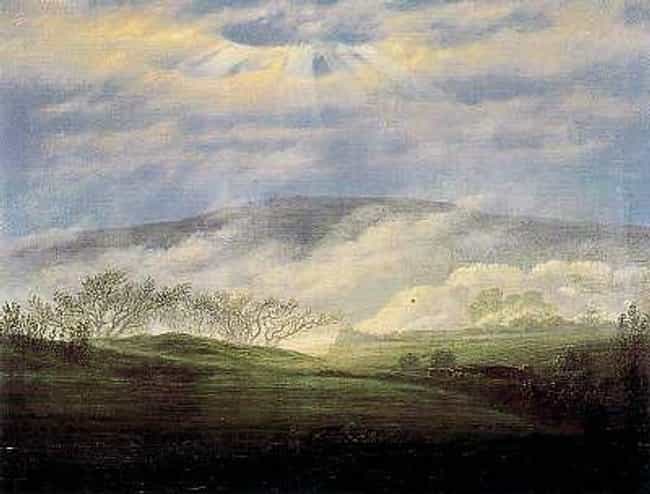
A Fog Descended Upon Europe And The Mediterranean And Lasted For Months
Byzantine historian Procopius served as a military advisor to Belisarius, one of the Byzantine Empire’s most distinguished generals. Procopius accompanied Belisarius on his campaigns in Persia during the 520s and again in Sicily in 536. He wrote about a “portent” that took place that year:
For the sun gave forth its light without brightness, like the moon, during this whole year, and it seemed exceedingly like the sun in eclipse, for the beams it shed were not clear nor such as it is accustomed to shed. And from the time when this thing happened men were free neither from war nor pestilence nor any other thing leading to death.
Procopius wasn’t the only source to mention the darkness of 536. Michael the Syrian, a Byzantine scribe, wrote about it as well:
The sun was eclipsed for 18 months. For three hours in the morning, it would give light, but a light that resembled neither day nor night.
Other sources from throughout the Mediterranean mention a cloud or dust veil that darkened the Earth for a year around 536. As experts looked back on the era, they discovered evidence of a massive volcanic eruption that possibly deposited ash across the globe. The fog proved disastrous for the people of Europe.

With Darkness Came Widespread Famine
The effect of extended darkness on agriculture in 536 (and the following years) proved ruinous. Without the sun, crops wouldn’t grow, the temperature of the Earth dropped by between 1.6° and 2.5° Celsius, and civilizations around the world struggled to produce enough food to survive. Michael the Syrian described the landscape:
During that year fruit did not reach the point of maturity, and all the land became as though transformed into something half alive, or like someone suffering from a long illness.
Crop scarcities extended from Ireland through Continental Europe, across Asia to China in the immediate aftermath of the volcanic eruption in 536. The event triggered cooler temperatures that lasted for decades.

A Plague Swept Through The Byzantine Empire
The lingering cloud of dust was not the only issue that made 536 such a bad year. Procopius mentioned a pestilence that followed the darkness of 536, and Michael the Syrian wrote about the ruin that ran through the Byzantine Empire:
An unprecedented plague ensued which began in Constantinople where the first day 5,000 people [perished], the next day 10,000, the third 15,000, the fourth 18,000 – figures reported by the auditors that the emperor had placed at the gates of the city. They counted up to 300,000 people… and then left off counting.
No one was immune, as it “first attacked the poor class of the population, then the merchants and the nobility including the Imperial Palace.” The symptoms “began with a [sore] that formed in the palm of the hand, and progressed until the afflicted one could not take a step. The legs swelled, then the buboes burst and pus came out.”
The presence of the plague in Constantinople meant “the city began to stink [from the unburied] and so [they] were thrown into the sea, but the bodies kept resurfacing.” The Emperor Justinian ordered [them] to be removed from the city, but “often the bearers themselves [were felled by disease] in the street. Furthermore, it even happened that someone would enter a deserted house and gather up its treasures to [take], but would end up [not making it out alive] at the door, on the way out.”
Things became even worse in other parts of the empire, however:
The plague spread to Egypt where one city was wiped out [in this manner]: only seven men and a boy remained alive there. As they wandered around the city, suddenly the seven men [were felled] on the spot. Then the lad saw the angel of God in the guise of an old man. Seeing the child weeping, the angel removed him from the city and said: “Go now and weep not, for this punishment is the payment for heresy and sin.”
What came to be called the Plague of Justinian took out millions of people in the Byzantine Empire between the early 540s and the mid-8th century.

Summer Snow Reportedly Fell In China And Mesopotamia
Around 536, the climate in China underwent some odd changes of its own. The Nan Shi, a 6th-century chronicle, reported a yellow ash-like substance falling from the sky. The exact composition of the material remains unclear, but accounts describe it as dirt or dust that could be “scooped up in handfuls.” The substance appeared three times during the late 530s.
The following year, Chinese chronicles indicated snow during the summer months. The Chronicles of the Southern Dynasties reported frost in mid-summer with snow in August, which ruined crops in Qingzhou and other provinces. The result was widespread famine that lasted for about two years and resulted in a loss of roughly 70-80% of the population.
Additional reports of frost and snow in Mesopotamia also turned up during the summer of 536, and the winter was “a severe one, so much so that from the large and [unwanted] quantity of snow, the birds perished.”

Scandinavians Abandoned Entire Cities
During the 6th century, villages in eastern and central parts of Sweden saw such decline that many cites were abandoned. The reason for this deserting remains somewhat unclear, but the “dust veil” of 536 and subsequent scarcity certainly influenced Scandinavians’ actions.
Prior to the ice core evidence about the eruption of 536, theorists believe a possible meteor strike brought on such devastation. Additional evidence showed that village abandonment happened due to farmhouse fires, indicating relocation wasn’t out of the question.
That said, a Norse legend called Fimbulwinter includes a three-year-long winter that occurred before Ragnorök, the end of the world also referred to as the Twilight of the Gods. It is possible the story of the extended winter became associated with the extended darkness present in this century.
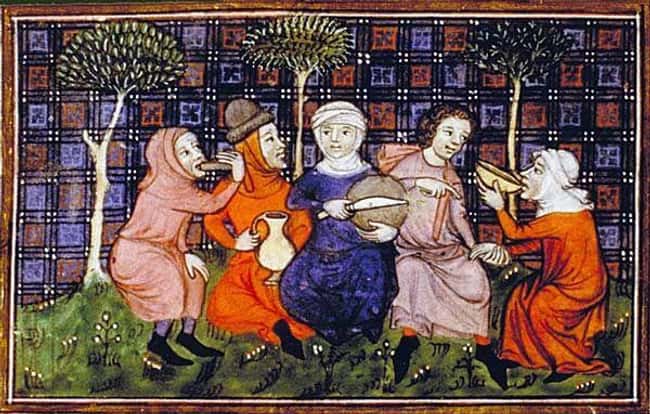
Irish Chroniclers Describe Widespread Bread Shortages
Monks in Ireland during the 6th century took notice of the crop failures around them. The monastic tradition in Ireland, later dubbed Celtic monasticism, exhibited a love of scholarship. This prompted monks to not only copy existing manuscripts and preserve learning, but also keep records of the world around them. The unknown author of the Annals of Ulster recorded a “failure of bread” in 536, and his counterpart at Inisfallen indicated bread shortages from 536 to 539.
Ulster, in the northern part of Ireland, and Inisfallen, located in the south, were both in proximity to Iceland, where some experts posit a volcano triggered the fog of 536.
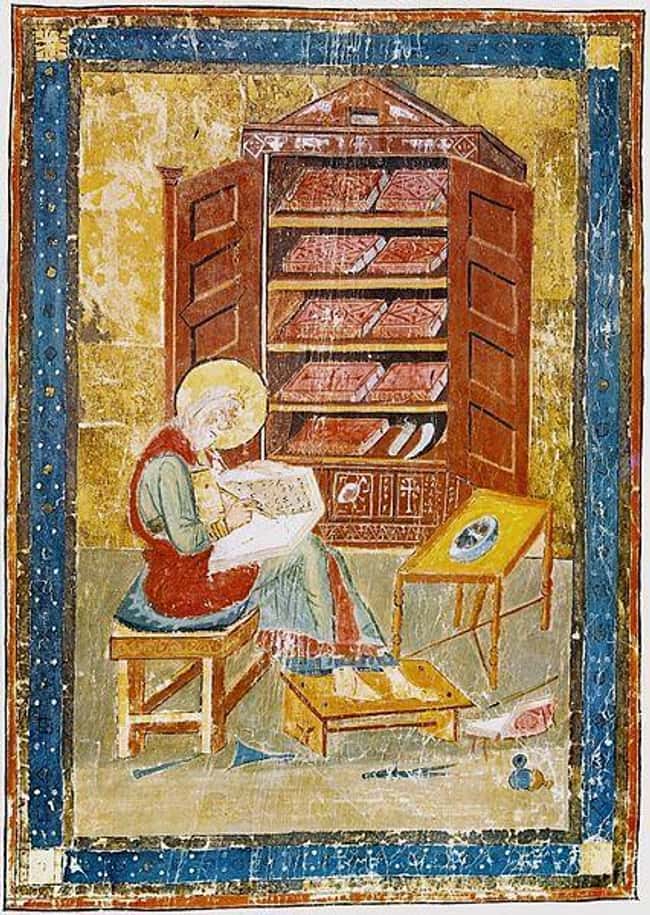
People Grew Confused And Fearful Of The Darkened Skies
This was a time of limited understanding of meteorology and no means of relaying information, such as an eruption, to the world at large. Therefore, the fog layer stressed many people who struggled to understand its origins. Roman historian Cassiodorus emphasized the unease brought on by the cloud that seemed to hang over him and everyone else for more than a year. He wrote a letter to his associate in 538 about the assumed divine aspects of the changes he witnessed in the mid-6th century:
Strange has been the course of the year thus far. We have had a winter without storms, a spring without mildness, and a summer without heat. Whence can we look for harvest, since the months which should have been maturing the corn have been chilled by Boreas? How can the blade open if rain, the mother of all fertility, is denied to it? These two influences, prolonged frost and unseasonable drought, must be adverse to all things that grow. The seasons seem to be all jumbled up together, and the fruits, which were wont to be formed by gentle showers, cannot be looked for from the parched earth…. The middle air is thickened by the rigor of snow and rarefied by the beams of the Sun.

Subsequent Volcanic Eruptions Only Made Things Worse
Volcanic eruptions in Iceland in 540 and 547 contributed to the general darkness of the time. The three eruptions together led to what scholars termed the Late Antique Little Ice Age. This Little Ice Age cooled the planet for at least a decade, if not longer. The result was crop failure and starvation, which led to increasingly unhealthy populations susceptible to illness.
Based on tropical volcanic ash discovered in both northern and southern ice cores, some scholars posited a volcano in El Salvador in 535 or 536 kicked off the Little Ice Age. Near San Salvador, the Ilopango volcano – now a crater lake – erupted during the mid-6th century as well. The eruption coincided with the “Hiatus” period of the Mayan Empire, during which time the population and construction activity declined. Others believed the eruption of volcanoes in North America during the 530s brought on the massive cloud that hung in the skies over Northern and Western Europe.
Even if the Ilopango eruption, a North American volcano, or any other volcanic event was not singularly massive enough to blanket the Western hemisphere with ash, the events contributed to the overall darkness of mid-6th century.
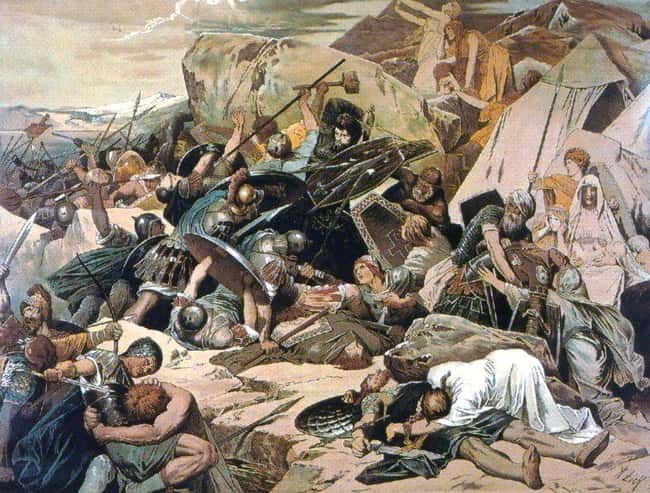
The Events Of 536 Likely Sealed The Fate Of The Roman Empire
By the 6th century, the Roman Empire had shifted east to Constantinople. Under the leadership of Emperor Justinian, the Byzantine Empire attempted to recapture the glory and size of the old Roman Empire. Justinian sent generals west, most notably Belisarius, who fought against Goths, Carthaginians, Vandals, and others during the 530s. Justinian failed to sustain the gains Belisarius made due to the constant uprisings and imperial instability.
With the outbreak of the bubonic plague in 541, the Byzantine Empire lost between 35% to 55% of its population. This not only weakened the empire economically, but also resulted in social upheaval, military failures, and administrative decline. The Byzantine Empire never fully recovered from the crop failures, disease, and overall strife triggered by the events of 536.
In the west, the empire had long since broken down into individual states controlled by different Germanic kings. The Angles, Saxons, Franks, Ostrogoths, Visigoths, Vandals, and others continued to fight for people and land, seizing upon the lack of centralized leadership and economic stability. When the volcanic eruption of 536 hit, it was exactly when the former Roman Empire became its most vulnerable in the east and west alike.
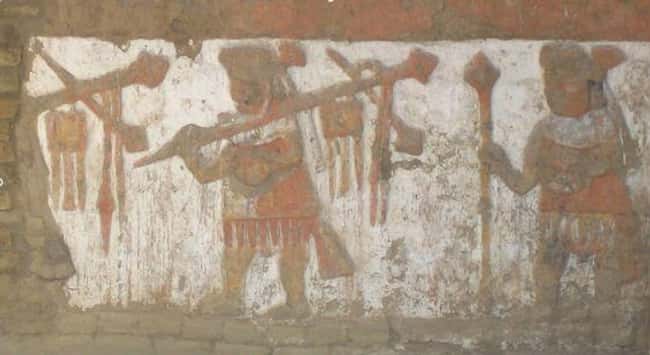
The Peruvian Moche Civilization Reportedly Suffered In 536 As Well
The Moche civilization once dominated the western coast of South America, contributing to the cultural and economic heritage of the region. The Moche were avid fishermen and mastered irrigation to grow various crops, including beans and corn.
Agricultural commerce supported settlements like civilization’s namesake, Moche, but an El Niño cycle in the mid-6th century caused waters so warm that fish populations could not sustain life. Massive floods and heavy rains destroyed irrigation networks, making it impossible to grow enough food to feed the population. Famine and climate chaos combined with ineffective leadership and the Moche never again achieved their earlier strength.
Initially, historians believed this El Niño, sometimes referred to as a “Super El Niño,” could have been kicked off by a volcanic eruption, most likely Krakatoa in Indonesia.

A Group Of Scholars Analyzed The Evidence In 2018
The horrible conditions described by contemporaries in 536 received new attention in 2018. Harvard historian Michael McCormick was among the interdisciplinary group of scholars who pooled their research to determine whether 536 was truly the worst year ever. However, the group started its research with a different goal in mind. Rather, the 12 academics wanted answers about metal usage, coinage, and changes to 7th-century monetary systems. Their investigation happened to include analysis of glaciers in the Swiss Alps to find out what brought on an extended period of darkness that lasted for 18 months during the mid-6th century.
Through unprecedented technological research, a team of professors found volcanic tephra (volcanic fragments) from an Icelandic volcano in ice core samples from Swiss glaciers. Coincidentally, the samples dated back to 536. This confirmed a volcanic event that shot ash through the Northern European atmosphere and spread around the world, triggering a global crisis.
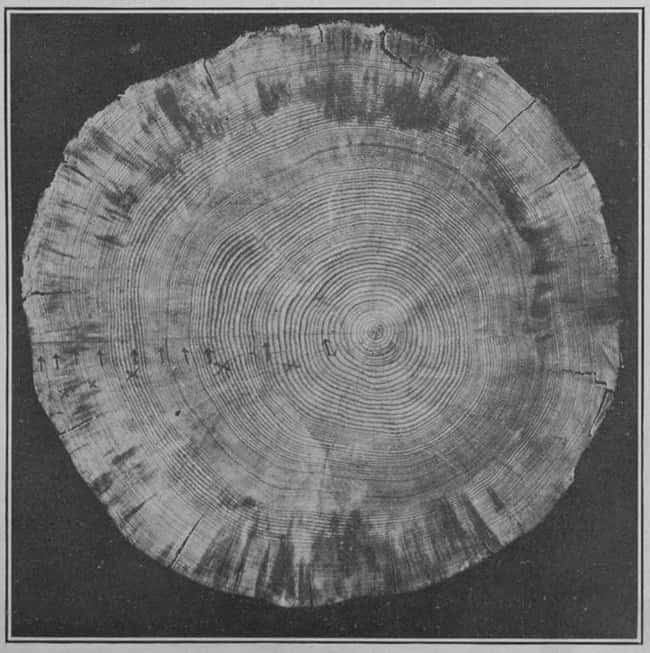
Tree Rings Reveal How Much The Climate Impacted The Environment
The new ice core evidence presented by the 2018 study and others builds on evidence discovered by dendrochronologists during the 1990s. Dendrochronology uses a tree’s rings to determine its age. According to a professor from the 2018 study, scientists first looked at rings from Icelandic trees and saw something significant had taken place during the mid-6th century. Tree growth slowed, indicating colder temperatures than usual. The new ice core evidence added specificity to those findings and helped trace the catastrophic event that kicked off massive change to the year 536.
Additional research shows that tree growth slowed around the world. In both North America and Europe, tree ring data indicates the world became considerably colder for at least 15 years after the 536 eruption. Between 536 and 545, world temperatures reached the lowest they had been in 2,000 years.
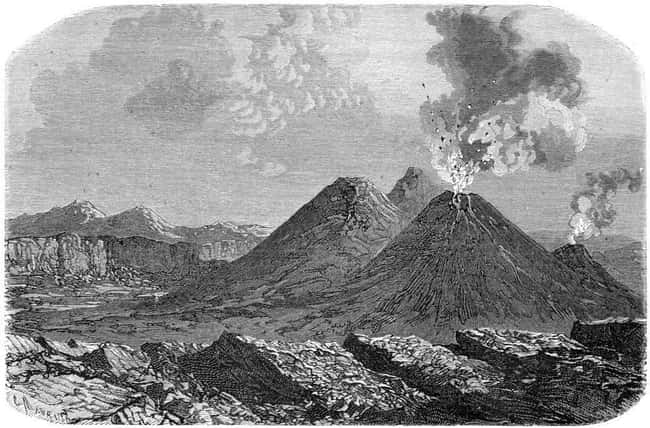
According To Ice Samples, Things Improved About A Century Later
As scholars looked for answers about economics, coinage, and metal usage during the 7th century, they came across data that led to a somber conclusion: 536 was not only the worst year to be alive, but it was only the beginning of some truly horrible times. However, Christopher Loveluck, Michael McCormick, and others also discovered when things started to improve for humankind.
According to their ice core samples, lead appeared in the atmosphere around 640. This indicated that people began producing silver as a material for monetary exchange. To experts, the introduction of silver meant people desired more coinage, suggesting an improvement in economic outlook. Things were looking up a century later in some places, although some regions didn’t experience silver introduced into their economies until the 660s.
–
(For the source of this, and many other equally intriguing articles, please visit: https://www.ranker.com/list/why-536-was-the-worst-year-ever/melissa-sartore/)








